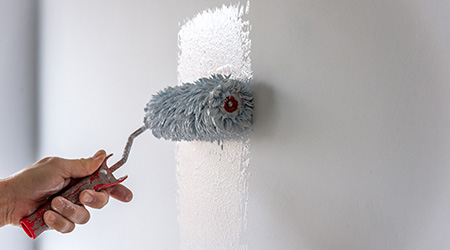Painting can be a tedious task. Between scheduling projects towork around facility activities and operations and trying to prevent general wear and tear on painted surfaces, it can be a challenge to keep newly painted walls looking their best. In order to maintain longevity, managers must choose materials that can withstand high-touch areas. In this roundtable, Healthcare Facilities Today talks with paint manufacturers about strategies and tactics to maintain the appearance of newly painted walls.
How can managers best protect newly painted walls?
Low-gloss and lower-sheen finishes will help to hide flaws, especially in interiors, and when a space has plenty of natural light. For areas like ceilings or hallways, a flat or very low-gloss or sheen finish, such as matte, will work well. A high-gloss finish could be used as a tool to accentuate architectural features in a space. Low-gloss has a popular aesthetic appeal, due to advancements in coatings technology.For bathrooms, we tend to recommend semi-gloss and gloss wall finishes, since durability is essential in a place with moisture and high traffic, such as a hospital room. Professionals should not skimp on quality. “You get what you pay for,” goes the old adage
— Rick Watson, director of product information and technical services, Sherwin-Williams
Stain-blocking is a paint feature that a lot of people talk about in the sense that it blocks past stains from showing through. It is also important to talk about blocking new stains, especially in the healthcare environment where every day, the paint’s durability and function will be tested with handprints, rolling equipment, and other contact that causes scuffs.
— Paul Baik, product manager, Behr Paint Co.
Mackenna Moralez is assistant editor with Healthcare Facilities Today.

 Building Sustainable Healthcare for an Aging Population
Building Sustainable Healthcare for an Aging Population Froedtert ThedaCare Announces Opening of ThedaCare Medical Center-Oshkosh
Froedtert ThedaCare Announces Opening of ThedaCare Medical Center-Oshkosh Touchmark Acquires The Hacienda at Georgetown Senior Living Facility
Touchmark Acquires The Hacienda at Georgetown Senior Living Facility Contaminants Under Foot: A Closer Look at Patient Room Floors
Contaminants Under Foot: A Closer Look at Patient Room Floors Power Outages Largely Driven by Extreme Weather Events
Power Outages Largely Driven by Extreme Weather Events